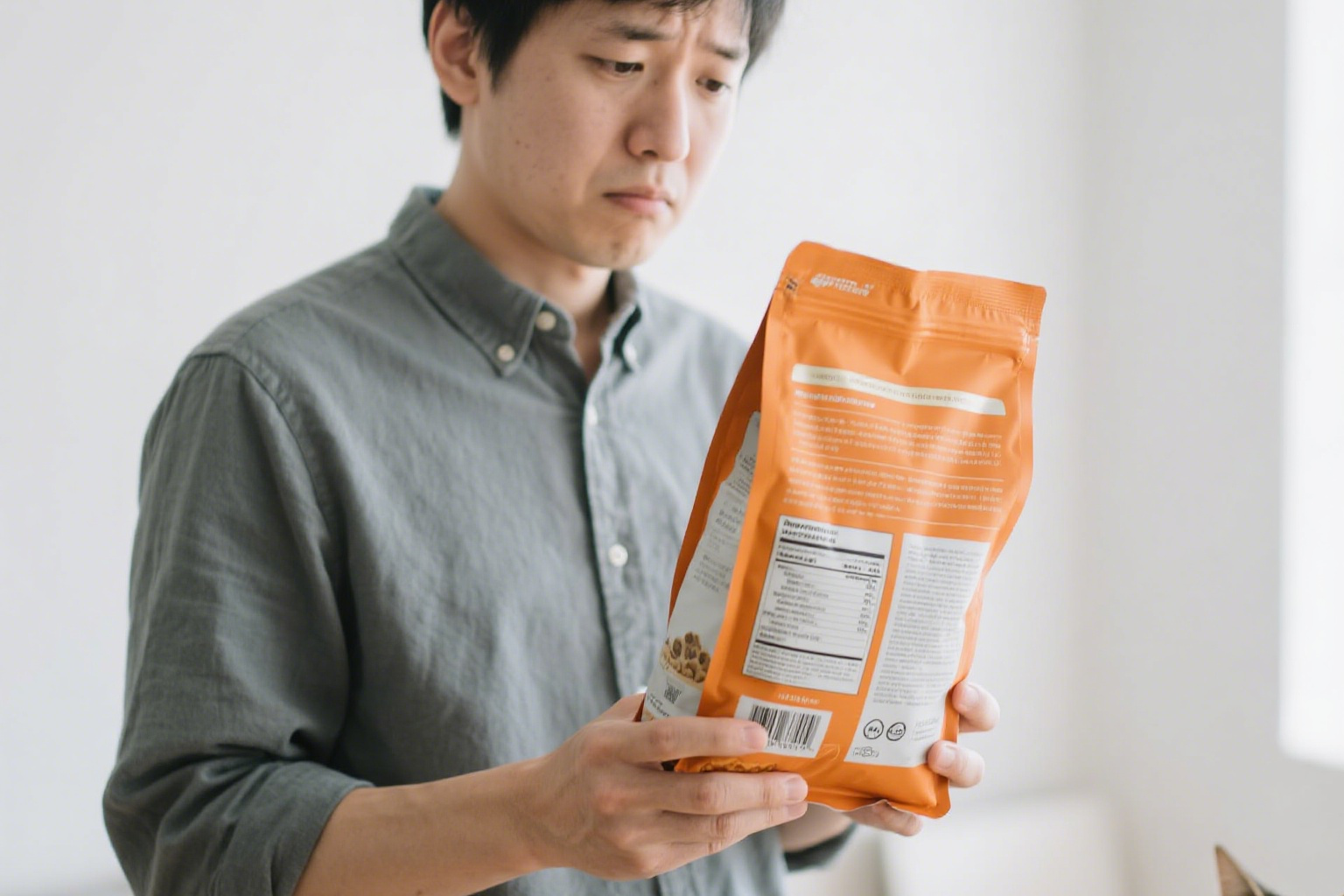Feeling overwhelmed in the cat food aisle? You’re not alone. The bags are covered in beautiful pictures of happy cats and buzzwords like “natural,” “premium,” and “holistic.” But what really matters for your feline friend’s health?
The secret is hiding in plain sight: on the cat food label.
Learning how to read a cat food label can feel like trying to decipher a secret code. But once you know the system, you can confidently walk past the clever marketing and choose what’s genuinely best for your cat. At AptPaws, we believe in empowering cat parents, and that starts with understanding what’s really in their bowl.
This guide will break it down for you. We’ll focus on the 5 key things you absolutely must look for, and the sneaky marketing terms you can confidently ignore.

Table of Contents
1. The First Five Ingredients: The Foundation of the Food
What to Look For:
Forget everything else for a moment and go straight to the ingredient list. This is the most crucial part of what to look for in cat food. Ingredients are listed by weight, from heaviest to lightest. This means the first five ingredients make up the bulk of the food.
For cats, who are obligate carnivores, you want to see a high-quality, named animal protein source listed first.
Look for specific names, not vague terms.
- Excellent Choices: “Deboned Chicken,” “Salmon,” “Turkey,” “Lamb,” “Beef.”
- Good Choices: “Chicken Meal,” “Salmon Meal.” (A “meal” is a concentrated protein powder, which is perfectly healthy).
What to Be Wary Of:
Vague, generic terms are a red flag. These often hide lower-quality or inconsistent ingredients.
- Red Flags: “Meat,” “Poultry Meal,” “Animal By-products.” (What kind of meat? Which animal? You don’t know, and that’s the problem).
The AptPaws Rule: If the very first ingredient isn’t a specific, named animal protein, put the bag down and walk away.
2. The Guaranteed Analysis: Just the Facts
What to Look For:
This little box is your objective truth. The Guaranteed Analysis panel tells you the minimum percentages of Crude Protein and Crude Fat, and the maximum percentages of Crude Fiber and Moisture.
- Crude Protein: Look for a high percentage, ideally 30% or more for dry food. Protein is king for cats.
- Moisture: This is especially important when comparing wet and dry food. Wet food has much higher moisture (around 75%), which is great for a cat’s hydration. When you see the protein percentage on wet food, remember it looks lower because of all the water. You need to convert it to a “dry matter basis” to truly compare. (A topic for another day!)
3. The AAFCO Statement: The Official Seal of Approval
What to Look For:
This might be the most overlooked—but most important—sentence on the entire package. The Association of American Feed Control Officials (AAFCO) sets the nutritional standards for pet foods in the US.
You are looking for a sentence that says something like:
- “(Name of Product) is formulated to meet the nutritional levels established by the AAFCO Cat Food Nutrient Profiles for [life stage].”
This statement confirms that the food is a complete and balanced diet for the life stage indicated (e.g., “adult maintenance” or “growth and reproduction” for kittens).
What to Ignore:
Any food that says it’s for “intermittent or supplemental feeding only” is not a complete meal. It’s a treat, and should not be used as your cat’s primary food source.
4. Named Animal Fat Sources: The Right Kind of Fuel
What to Look For:
Just like with protein, specificity is key when it comes to fat. Fat is an essential source of energy for cats and provides vital fatty acids for skin and coat health.
Look for a named source of animal fat.
- Excellent Choices: “Chicken Fat,” “Salmon Oil,” “Beef Fat.”
- Good Plant-Based Additions: “Flaxseed,” “Sunflower Oil” (in smaller quantities).
What to Be Wary Of:
Again, avoid vague terms.
- Red Flags: “Animal Fat.” This fat could come from any source, including rendered restaurant grease, and the quality is highly questionable.
5. Artificial vs. Natural Preservatives: The Finishing Touch
What to Look For:
All dry pet food needs preservatives to prevent the fats from going rancid. The key is what kind of preservatives are used.
Look for natural preservatives.
- Excellent Choices: “Mixed Tocopherols” (which is a source of Vitamin E), “Rosemary Extract,” “Vitamin C” (ascorbic acid). These are safe and effective.
What to Ignore (and Avoid):
You should actively avoid foods that use controversial artificial preservatives. While technically approved, many pet parents choose to avoid them due to potential health concerns.
- Red Flags: BHA, BHT, Ethoxyquin.
Putting It All Together
Don’t let the marketing fool you. Learning how to read a cat food label empowers you to see past the flashy bags and make a decision based on facts, not feelings. Focus on the cat food ingredients, check the Guaranteed Analysis, look for the AAFCO statement, and you’ll be giving your cat the gift of good nutrition.
At AptPaws, we know you want the best for your furry family member. Now, you have the knowledge to go out and find it.